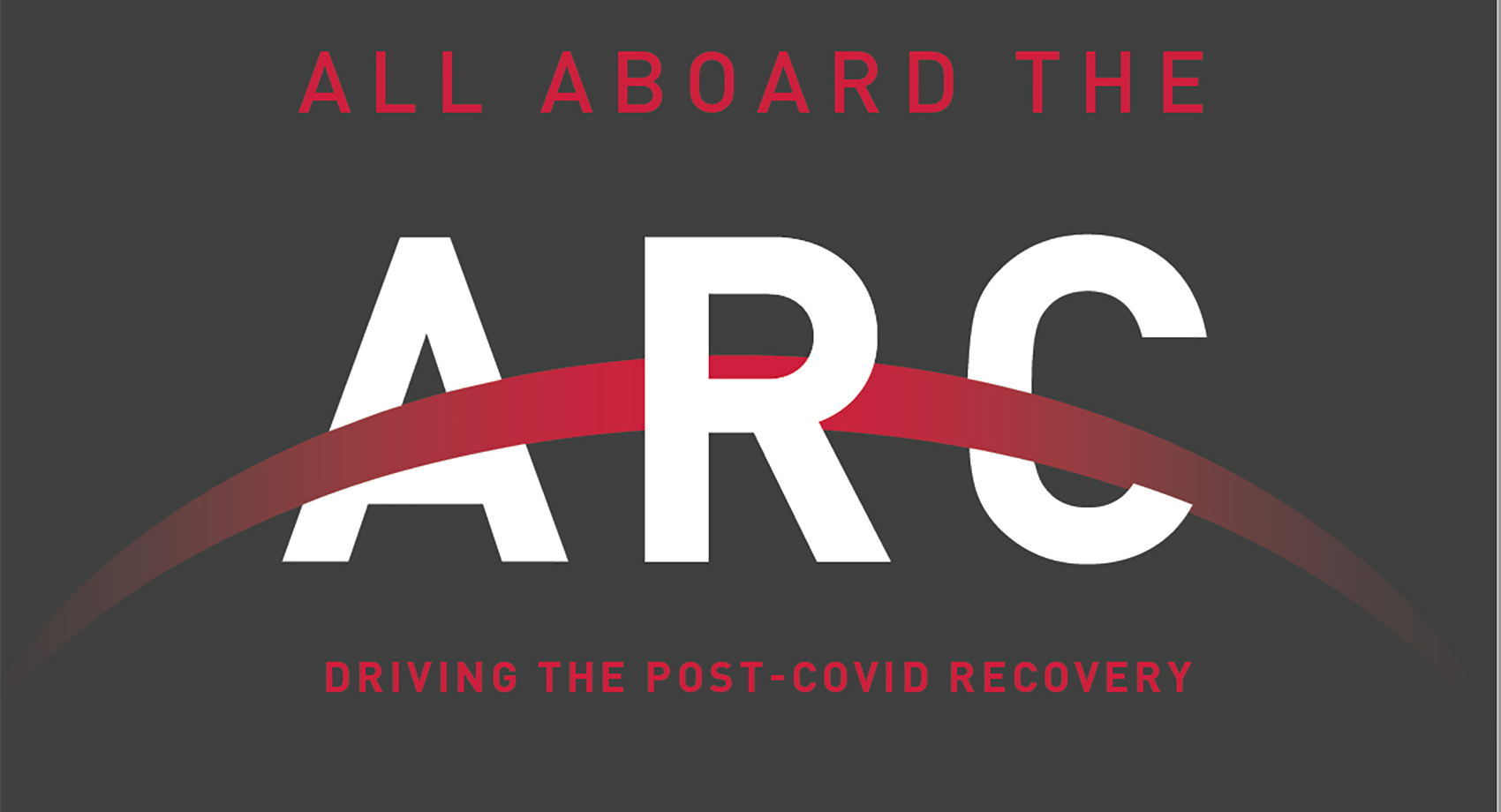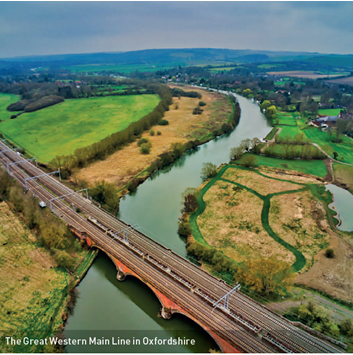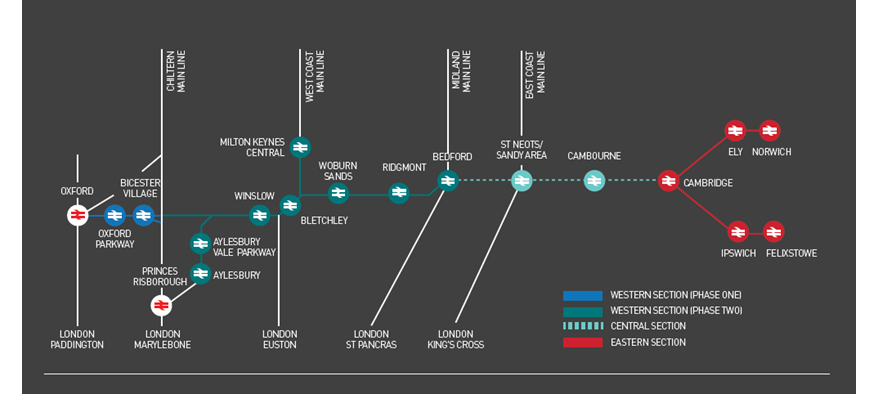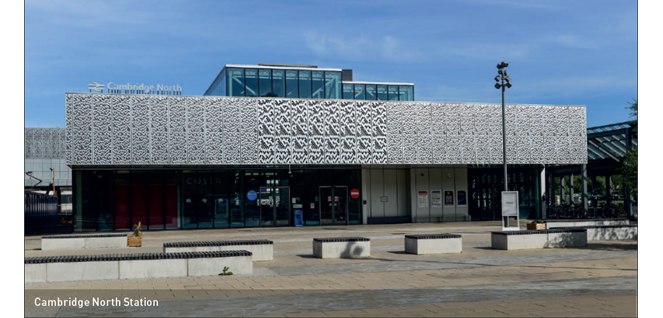Changing Priorities
The East West Rail and Oxford to Cambridge Expressway schemes are the two most high profile infrastructure projects to have emerged as part of the government’s ambitions for the Arc. The government first made a commitment to fund East West Rail in 2011, while the Expressway has its roots in the first Road Investment Strategy (RIS1) published in 2014.
However, there has been a sharp contrast in the fortunes of the two projects over the last year. East West Rail has gained momentum, boosted by the passing of two significant milestones in early 2020. The preferred route option for the section between Bedford and Cambridge was announced; and the government gave the go-ahead for major construction works between Oxford, Bedford, Milton Keynes and Aylesbury.
Conversely, the Oxford to Cambridge Expressway has stalled in the face of opposition from residents, activists and local councils who feared that it would result in environmental damage, rising carbon emissions and disruption to rural communities. The Road Investment Strategy 2 (RIS2), published in March 2020, confirmed that further development of the scheme was being paused, while work would be done to explore other potential road projects in the Arc.
Local & Regional Solutions
The pausing of the Expressway project may point to a re-framing of transport strategy within the Arc. While there is a need for improved infrastructure connecting the two ends of the Arc at Oxford and Cambridge, more localised transport issues are a greater concern for most residents. A joined-up approach is required that ties Arc-wide transport infrastructure with local projects to support growing communities.
Future transport projects will clearly need to minimise environmental damage if they are to be taken forward. With large-scale road building being politically and environmentally contentious, public transport and cycling route schemes may be more likely to get off the ground. New transport infrastructure will need to be designed to support smart, sustainable communities and be ready for future transport technologies such as autonomous electric vehicles.
East West Rail
The East West Rail scheme will re-establish a rail link between Oxford and Cambridge, with onward connections to East Anglia. The route falls into three distinct sections.
Western Section
The Western section comprises two phases. Phase One, between Oxford and Bicester Village, was opened in 2016. Phase Two will upgrade and reconstruct existing and mothballed lines linking Bicester and Bedford, and a branch line from Milton Keynes to Aylesbury. The latter section will create a route from Milton Keynes to London Marylebone via Aylesbury and Princes Risborough. A new station to be built at Winslow will sit on both the Oxford-Bedford line and the Milton Keynes- London route. The government approved the commencement of major construction works on Phase Two in early 2020. The first passenger services are expected to commence by the end of 2023.
Central Section
The Central section will link Bedford and Cambridge, enabling services to run the full route between Oxford and Cambridge. The most important route decisions for East West Rail are in this section, as it will largely require the construction of completely new track, with key parts of the old Varsity Line route no longer available. The preferred route option for the Central section was announced in early 2020. This route will stop at Bedford, providing an interchange with Midland Main Line services. It will leave Bedford to the north, before heading for the area between St Neots and Sandy, where a new station will provide a connection with the East Coast Main Line. The route will then serve a new station at Cambourne, before approaching Cambridge from the south using existing lines. Independent of the plans for East West Rail, there are proposals for a new Cambridge South station on this part of the route, to serve the Cambridge Biomedical Campus and the Southern Fringe development area. More detailed route alignment proposals will be developed and consulted on over the coming years, with construction expected to start in 2025.
Eastern Section
The Eastern section includes lines running from Cambridge to Norwich, and from Cambridge to Ipswich and Felixstowe. These lines are already operational, but options are being considered to enhance services and increase capacity. The East West Rail Consortium, which has campaigned for East West Rail since the 1990s, has released a prospectus arguing that improvements to the Eastern Section should be made ahead of the completion of the Central Section. This would enable direct services to run from Norwich and Ipswich through to Oxford, and it would open up new rail freight links between the port of Felixstowe and other parts of the UK, such as a route to the port of Southampton. However, this part of East West Rail is still only an aspiration. It is not part of the remit of the East West Railway Company, which is overseeing the delivery of the Western and Central sections.
Oxford to Cambridge Expressway
The Oxford to Cambridge Expressway had been intended to provide an improved road link between Oxford and Cambridge, via Milton Keynes. However, the development of the project is now on hold.
A small section of the Expressway will still go ahead; a new dual carriageway will replace a 10-mile single carriageway stretch of the A428 between the Black Cat Roundabout, south of St Neots and Caxton Gibbet, west of Cambourne. This will complete an Expressway standard route between the A14 at Cambridge and the M1 near Milton Keynes. However, the larger part of the Expressway project was to have been a new road between the A34 south of Oxford and the M1 near Milton Keynes. Current routes between Oxford and Milton Keynes use poor standard and congested roads that add significantly to journey times. A preferred corridor for a new expressway route between these locations was announced in September 2018, but a rising tide of public opposition culminated in plans being paused by the government’s Road Investment Strategy 2 (RIS2), released in March
2020. Other smaller road projects will instead be explored, which may include improvements to the heavily congested A34 around Oxford.
The fate of the Expressway is a cautionary tale for the whole of the Arc project. It shows the likelihood that major developments will fail to get off the ground if local communities are not convinced of their benefits.
To download a copy of the full report, please click here.
Get in touch



Email me direct
To:
REGISTER FOR UPDATES
Get the latest insight, event invites and commercial properties by email





